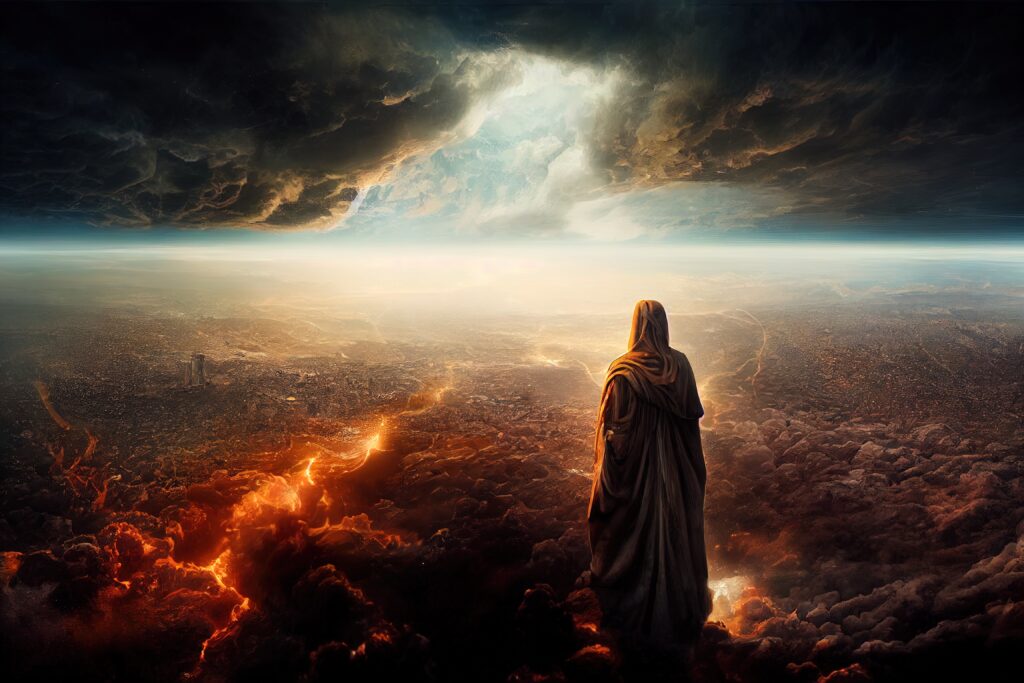
Past Tense to Future Tense.
“And when the thousand years are ended…” “And they marched up over the broad earth…” – Revelation 20: 7-9 NASB
In Revelation 20:7, the language dramatically switches from the past tense to the future, before shifting back to the past tense in v9. John seems to acknowledge that though he is reporting things seen in his vision, the event he is describing is a future one. Remember, the purpose of Revelation is not to reveal the future to us. Prophecy best makes sense as it is happening or after it has happened. Details of this passage remain obscure for this reason, though the big picture is clear.
The use of Gog and Magog in vs7-8 is a metaphor drawn from Ezekiel 38-39, representing nations that are in rebellion against God. What is fascinating is that the powers of evil repeatedly draw up in battle array to attack God and His people, yet God defeats them in Rev 19:19,20 and 20:7-9 without their being a huge battle scene. While God uses His great power to defeat evil, He never revels in images of conflict, warfare and death.
God would rather take death upon Himself than inflict it on others.
Revelation 20 contained two judgment scenes – in v4 & 12-15. These echo earlier judgment scenes and statements in 8:1; 11:15-18; 14:14-20; 15:4; 16:17-19; 18; 19:2. There is not any specific reference as to what these judgments refer to, but that does not need to obscure what they mean. Because this book is not so much a revelation of a chronology of future events, as it is a revelation of Jesus Christ, we can concentrate on what really matters here. In both judgment scenes in Revelation 20, God’s justice is upheld. In the first judgment, those saints who have complained in Revelation 6:10 about the delay in God’s justice not only get to see God’s justice but also get to take part in it. Having been the victims of unjust persecution, the tables are now turned, and they are given places at the judgment, where they oversee justice. Their role is to co-reign with Christ, and therefore share with Him His role as judge. Nothing could speak louder of God’s fairness than that!
In the second judgment, God is seen to be just, rewarding all according to the choice that THEY made about whether to be inscribed in the Lamb’s Book of Life. These judgment scenes re-use the language from promises made to several of the seven churches in Revelation 2 and 3 (the promises to the remaining churches find fulfilment in Revelation 21 and 22). The second church, Smyrna, is promised that those who overcome will not be hurt by the second death: this promise is fulfilled in Revelation 20:6, where the second death has no power over those who belong to the testimony of Jesus and have not worshiped the beast. On the other hand, those not found in the book of life in Revelation 20:14 will experience the second death. The fourth church, Thyatira, is promised authority over the nations, as reflected in Revelation 20:4. The fifth church, Sardis, is promised never to have its name blotted out of the Book of Life; this promise is fulfilled in Revelation 20:12, 15. The overcomers from the seventh church, Laodicea, are promised that they will be seated on the throne of Jesus which is fulfilled in Revelation 20:4 . Again, this section reinforces the fact that God’s judgment is just and transparent – the perfect, mysterious blend of mercy and justice.
Revelation mentions the first and second deaths. The first death represents our temporal death, which the Bible usually calls a sleep (see Daniel 12:2; John 11:11-14 etc 100’s of times). The second is an eternal eclipse, not only for the unsaved but also for death and the grave. In the second death, God finally eliminates the sin problem, which was judged at the cross and meets its doom at last. God’s people need never live with the fear that sin and death will somehow make a comeback.
While some Christians have seen Revelation 17 – 20 as scary and dark, they should actually give us hope and confidence, for they reveal the progressive destruction of the devil’s kingdom in unequivocal language. These chapters mirror the judgment scenes of Revelation 4-8, where we saw into the throne room of God. There the judgments were pronounced but not fully executed; now we see them completed once and for all.
